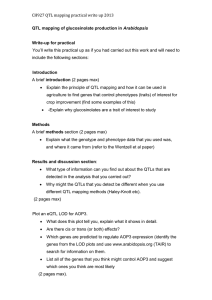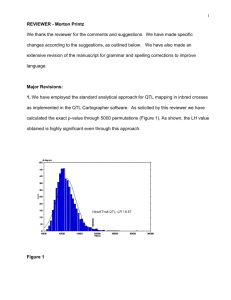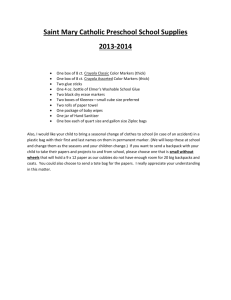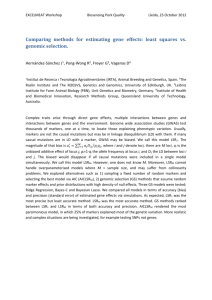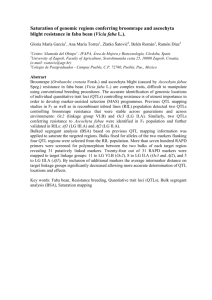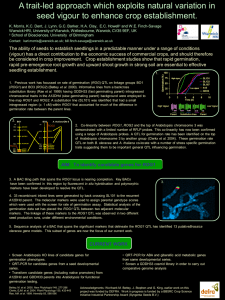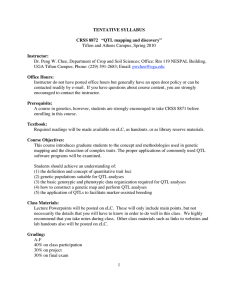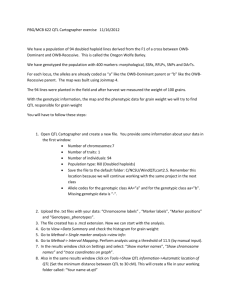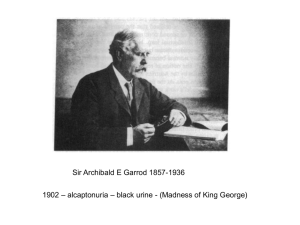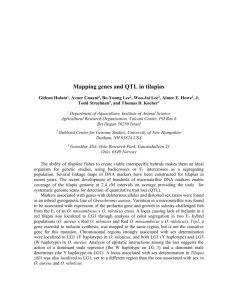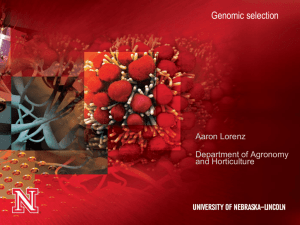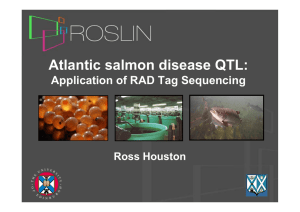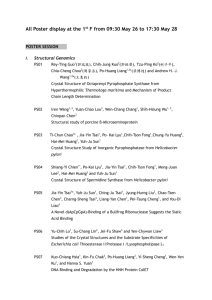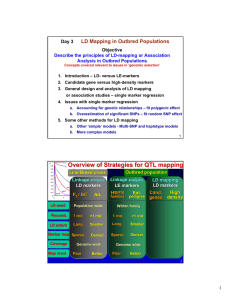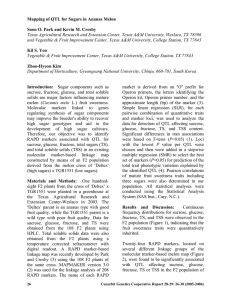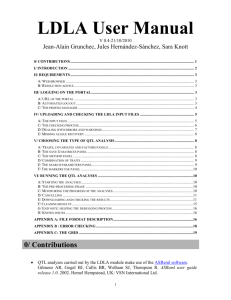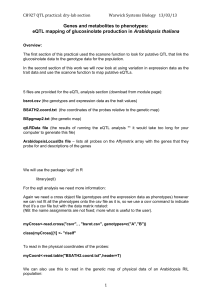Fine Mapping Quantitative Trait Loci Affecting Body Weight and
advertisement
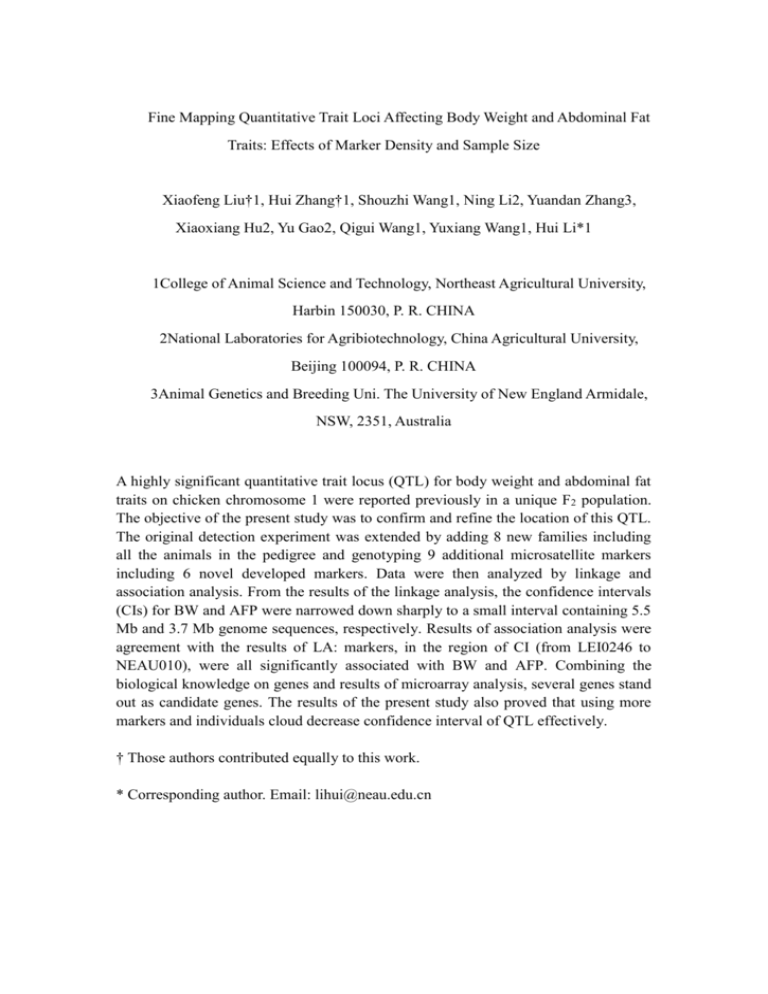
Fine Mapping Quantitative Trait Loci Affecting Body Weight and Abdominal Fat Traits: Effects of Marker Density and Sample Size Xiaofeng Liu†1, Hui Zhang†1, Shouzhi Wang1, Ning Li2, Yuandan Zhang3, Xiaoxiang Hu2, Yu Gao2, Qigui Wang1, Yuxiang Wang1, Hui Li*1 1College of Animal Science and Technology, Northeast Agricultural University, Harbin 150030, P. R. CHINA 2National Laboratories for Agribiotechnology, China Agricultural University, Beijing 100094, P. R. CHINA 3Animal Genetics and Breeding Uni. The University of New England Armidale, NSW, 2351, Australia A highly significant quantitative trait locus (QTL) for body weight and abdominal fat traits on chicken chromosome 1 were reported previously in a unique F2 population. The objective of the present study was to confirm and refine the location of this QTL. The original detection experiment was extended by adding 8 new families including all the animals in the pedigree and genotyping 9 additional microsatellite markers including 6 novel developed markers. Data were then analyzed by linkage and association analysis. From the results of the linkage analysis, the confidence intervals (CIs) for BW and AFP were narrowed down sharply to a small interval containing 5.5 Mb and 3.7 Mb genome sequences, respectively. Results of association analysis were agreement with the results of LA: markers, in the region of CI (from LEI0246 to NEAU010), were all significantly associated with BW and AFP. Combining the biological knowledge on genes and results of microarray analysis, several genes stand out as candidate genes. The results of the present study also proved that using more markers and individuals cloud decrease confidence interval of QTL effectively. † Those authors contributed equally to this work. * Corresponding author. Email: lihui@neau.edu.cn
